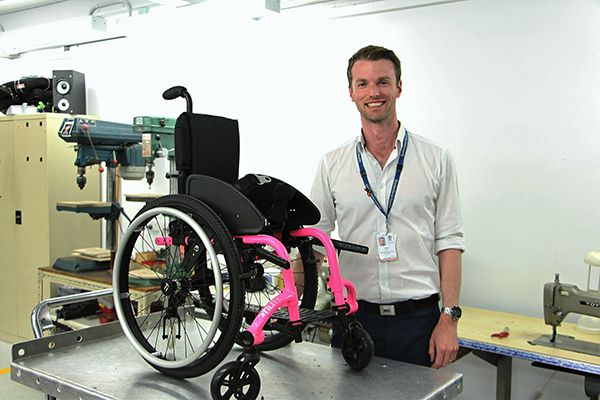NDIS fuels Rehab Engineering Centre mission to improve patient outcomes

3D Printing and other advances are helping the Metro North Rehabilitation Engineering Centre to custom equipment that improves the health and wellbeing of Queenslanders with disabilities.
For over 30 years, Metro North’s Rehabilitation Engineering Centre has done wonders across the state, creating custom equipment that improves the health and wellbeing of Queenslanders with disabilities.
The centre is one of only three in Australia, and is shaking up the one size fits all approach of many disability equipment providers.
Metro North Hospital and Health Service Rehabilitation Engineer Oliver Mason said the needs of patients with a disability were varying and complex, so we have to work with each individual to assess their specific requirements.
“We know what we can do for a patient in terms of equipment, but the complex part is analyzing their situation and providing a solution that will improve their health outcomes and comfort,” Oliver said.
To provide fast-paced, responsive care, the centre consists of both a clinic and a workshop. Once a patient is assessed in the clinic, the Rehabilitation Engineer heads to the workshop to design and fabricate a prototype of the equipment for trial.
“This mean patients, especially children, don’t have to wait a long time for basic items that will improve their quality of life,” Oliver said.
“The rollout of the National Disability Insurance Scheme is now allowing more possibilities for the team and our patients.
“Our service has been focused on seating, posture, and pressure ulcer management but now when patients meet with their NDIS planners to discuss their goals, if they want to cycle again, shoot a Nerf gun or play video games, we can help them.”
Technological advancements in 3D printing have also bolstered their capabilities to make unique and special equipment.
“3D printing has changed the way we work. It enables precision, accuracy and is efficient. We can now prototype complex items with a significant time and resource saving,” Oliver said.
“We’ve created a musical aid for a patient who couldn’t play the cello, and even a nerf gun mount for a patient’s wheelchair.
“We collaborated with a QUT student to help a boy with cerebral palsy play his Xbox. These more fun sounding items are vitally important in motivating patients to achieve their rehabilitation goals and get them back to community.”
For more information about the Rehabilitation Engineering Centre visit their page or the NDIS.
